Your 1700 Calorie Meal Plan Isn’t Working Because You’re Fighting Your Own Biology
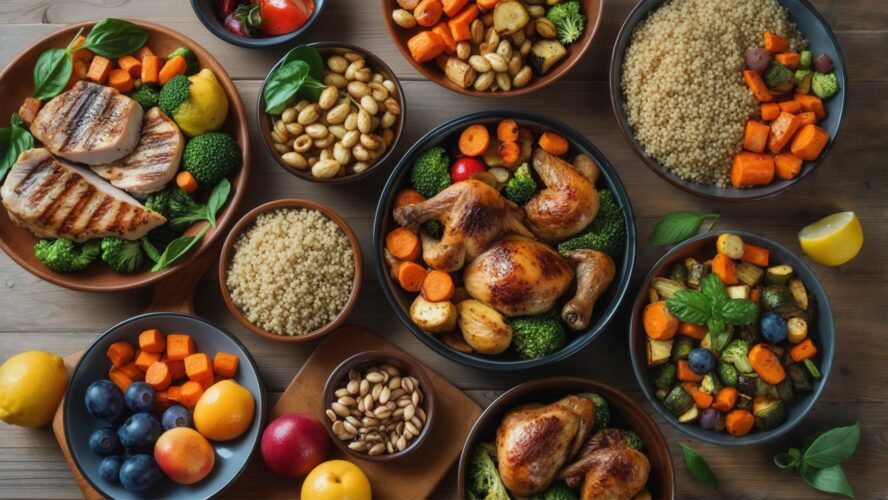
I used to stare at my meal prep containers every Sunday night, feeling like I had everything figured out. 1700 calories, perfectly portioned, macros on point. By Wednesday, I’d be face-deep in a bag of chips wondering where I went wrong. Sound familiar?
Here’s the kicker: A 1700-calorie high-protein diet provides 130-164 grams of protein daily (30-35% of total calories), supporting both muscle maintenance and gradual weight loss of 1-2 pounds per week, according to HeyWellness nutrition research. The science works. But most people bail on their 1700 calorie meal plan within the first month – not because they lack willpower, but because they’re missing the real reasons their body fights back.
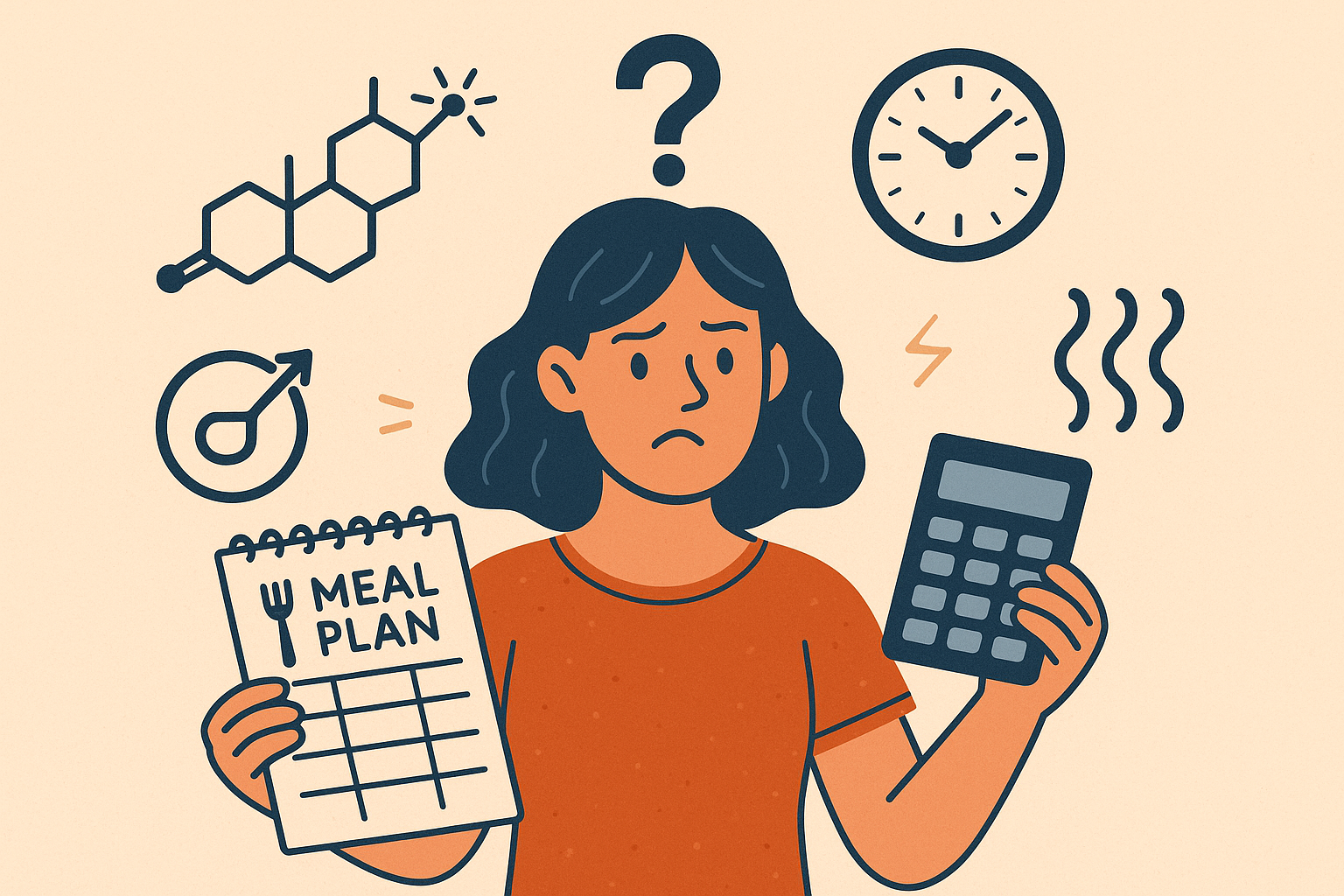
Table of Contents
- The Real Reason Your Body Fights Back Against 1700 Calories
- Why Your Hormones Are Sabotaging Your Perfect Meal Plan
- The Psychology Behind Why Restriction Never Works Long-Term
- When to Eat What (And Why It Actually Matters)
- Signs Your Body Gives You (Beyond the Scale)
- Making Your Plan Work with Real Life
- Final Thoughts
TL;DR
- Your body’s calorie needs swing by up to 300 calories throughout your cycle – ignoring this makes your 1700 calorie meal plan feel impossible during certain weeks
- Your body burns calories 18% more efficiently in the morning, so timing matters more than perfect meal distribution
- Eating 25-30g protein within 30 minutes of waking resets your appetite for the entire day
- Planned higher-calorie days every 10-14 days prevent your metabolism from getting lazy
- Your body gives you real-time feedback through energy levels, sleep, and cravings – you just need to listen
- Success depends heavily on your family and social life – meal prep needs to work with your actual reality
The Real Reason Your Body Fights Back Against 1700 Calories
Look, I get it. You’ve done everything right – tracked every calorie, meal prepped like a boss, and stuck to your plan religiously. But by week three, you’re fighting cravings like they’re personal enemies, and you’re wondering if you’re just weak or broken somehow.
You’re not. Your body is just playing by rules nobody told you about.
Here’s the thing that drives me crazy about most diet advice: it treats your body like a simple math equation. Eat 1700 calories, burn more than that, lose weight. Done. But your body isn’t a calculator – it’s more like a moody teenager that changes its mind based on hormones, sleep, stress, and about a million other things.
When planning your nutrition approach, consider how intermittent fasting strategies for women can complement your caloric framework by working with your body’s natural hormonal rhythms rather than against them.
Your Hormones Are Playing by Different Rules Than Your Meal Plan
Want to know something that’ll blow your mind? Your body’s calorie needs can swing by 300 calories throughout your cycle. That means some weeks, 1700 calories feels like plenty, and other weeks it feels like you’re starving on a deserted island.
And guess what happens when you ignore this? You spend two weeks every month white-knuckling it through cravings, then beating yourself up for “lacking willpower.”
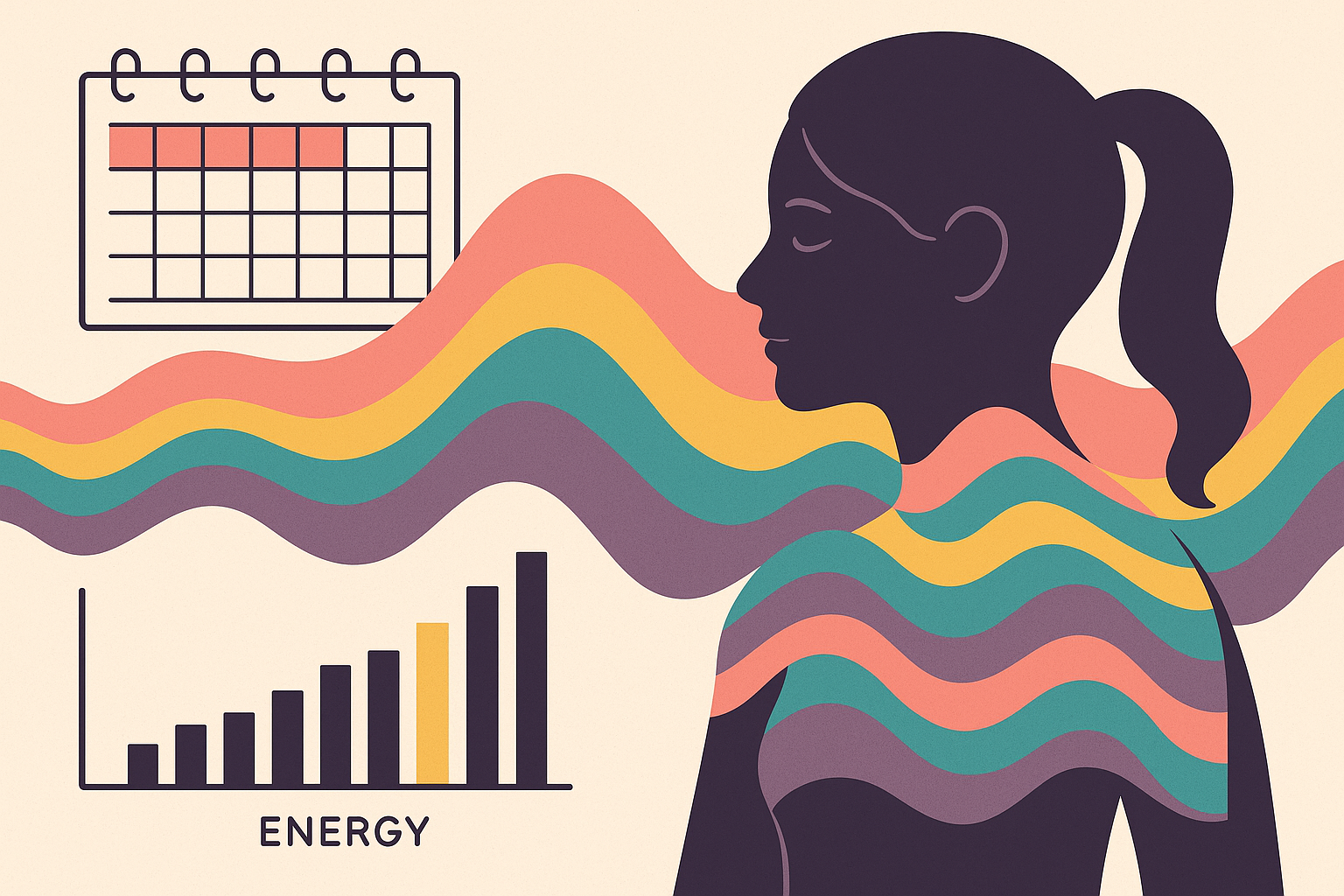
Why You’re Craving Carbs Before Your Period (And Why That’s Actually Smart)
Remember being told that craving pasta before your period was just “emotional eating”? Yeah, that’s garbage. During days 15-28 of your cycle, your body literally needs 15-20% more complex carbs to keep your blood sugar stable and prevent you from feeling like you want to eat your own arm.
This isn’t weakness – it’s biology. Your body is asking for what it needs, and we’ve been taught to ignore it.
Sarah, one of my clients, used to beat herself up every month around day 20 of her cycle. She’d stick perfectly to 1700 calories for two weeks, then go completely off the rails. Turns out, her body literally needed more carbs during that time – it wasn’t a willpower problem at all.
| Your Cycle Reality | Days | What Your Body Actually Needs | How to Handle It |
|---|---|---|---|
| Feel like a nutrition rockstar | 1-14 | Stick to your 1700 baseline | Higher protein, moderate carbs |
| Things get a little harder | 14-16 | Add 50-100 calories | Balanced macros, listen to your body |
| Everything looks delicious | 15-28 | Add 100-200 calories from good carbs | Don’t fight it, fuel it |
| You want to eat everything | 25-28 | Give yourself 150-250 extra calories | Anti-inflammatory foods, be kind to yourself |
Your Morning Metabolism Is Your Secret Weapon
Here’s something cool: your body burns calories 18% more efficiently in the morning. That means your 7 AM breakfast works way harder for you than your 7 PM dinner.
I always tell my clients to eat like a queen at breakfast and a peasant at dinner. Not because some guru said so, but because your body is literally primed to handle more food earlier in the day. Your metabolism is basically that friend who’s super energetic in the morning and crashes by evening.
Every Calorie Needs to Earn Its Place (But Don’t Go Crazy About It)
At 1700 calories, you don’t have room for foods that just sit there looking pretty. Every bite needs to bring something valuable to the table – protein, vitamins, minerals, fiber, something.
This doesn’t mean you can never have a cookie again (please don’t be that person). It just means being strategic about when and how you spend those calories.
Research published in The American Journal of Clinical Nutrition confirms that high-protein, calorie-controlled diets increase weight loss success rates by 27% versus standard protein diets, according to HeyWellness research.
The 80/20 Rule That Actually Makes Sense
Eighty percent of your 1700 calories should come from foods that do double or triple duty – like Greek yogurt that gives you protein, calcium, and probiotics all in one shot. A 100-calorie serving gives you 15g protein, 150mg calcium, and 0.75mcg B12, while 100 calories of soda gives you absolutely nothing useful.
The other 20%? That’s your fun money. Spend it on whatever makes you happy, whether that’s wine, chocolate, or those fancy crackers that cost way too much.
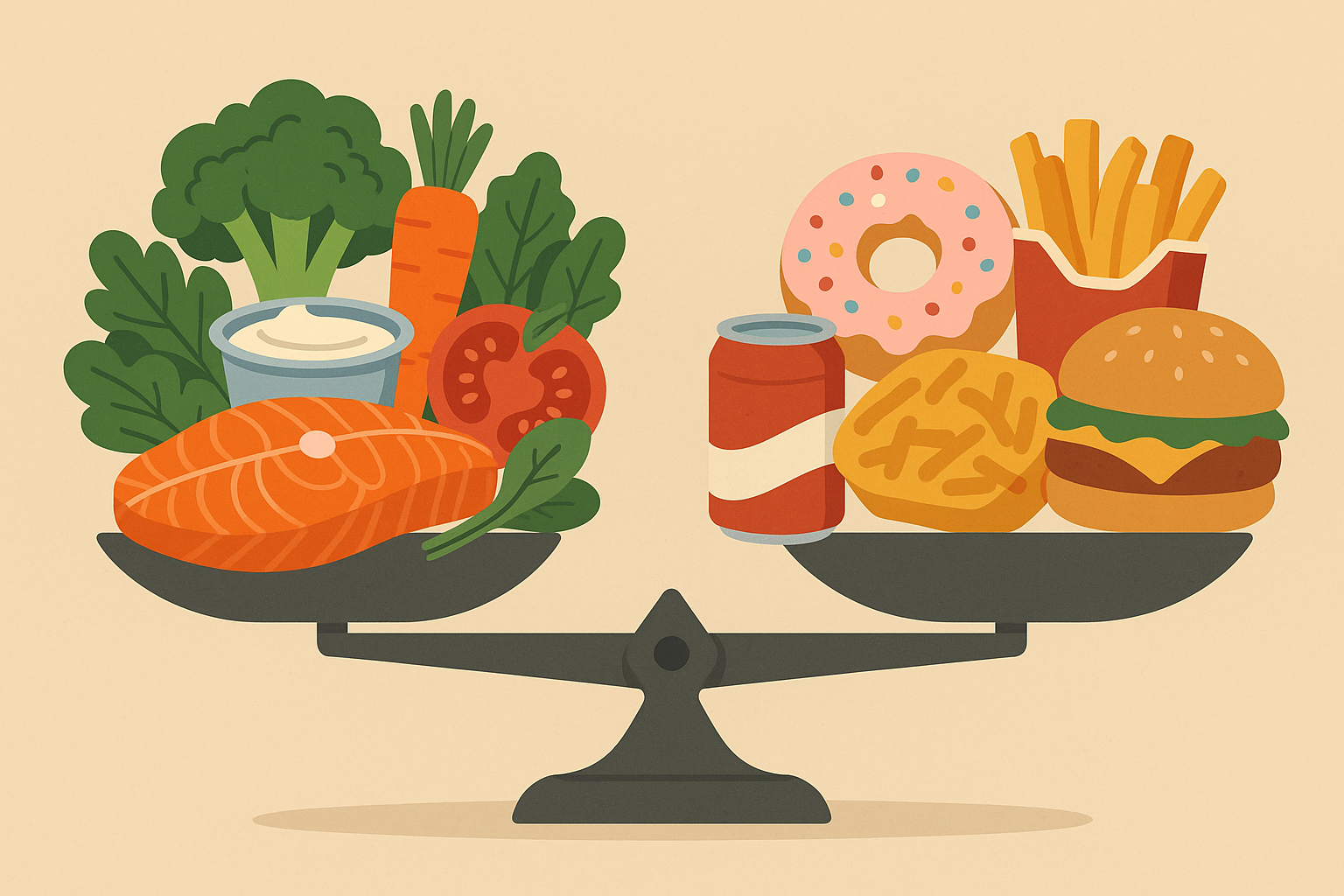
Why Your Hormones Are Sabotaging Your Perfect Meal Plan
Can we talk about something for a minute? If you’ve been dieting on and off for years, your hunger cues are probably more confused than a tourist without GPS.
Years of restriction teach your body not to trust its own signals. You stop knowing the difference between actual hunger and just wanting to eat because it’s noon or you’re bored or stressed.
Traditional 1700 calorie meal plan approaches fail because they focus on restriction rather than working with your body’s natural rhythms. Understanding the science behind hormonal balance is crucial for making your meal plan work with your biology rather than fighting against it.
The good news? You can fix this. It just takes some patience and the right strategy.
Getting Your Hunger Signals Back Online
The magic happens when you stop fighting your body and start working with it. A good 1700-calorie plan should make you feel satisfied, not like you’re constantly battling cravings.
This is where most people mess up – they think being hungry all the time is just part of “being good.” Nope. If you’re white-knuckling it through every day, something’s wrong with your approach, not your willpower.
The 30-Minute Protein Reset That Changes Everything
Want to know the easiest way to make your entire day feel manageable? Eat 25-30 grams of protein within 30 minutes of waking up. I’m talking real protein – eggs, Greek yogurt, protein smoothie – not a granola bar that’s basically candy in disguise.
This one change resets your appetite hormones for the entire day. Instead of spending all morning thinking about food, you’ll actually forget to eat sometimes (in a good way).
On a 1700-calorie diet meal plan, aim for 130-164 grams of protein daily, which is approximately 30-35% of total calories, supporting muscle maintenance and growth while promoting satiety and metabolic health, according to HeyWellness nutrition guidelines.
Mark, one of my clients, used to inhale a dozen donuts by 10 AM because he’d skip breakfast. Now he starts with scrambled eggs and barely thinks about food until lunch. Same guy, same willpower – different strategy.
Making 1700 Calories Feel Like You’re Eating Way More
Here’s a little secret from someone who’s been in the trenches: volume matters as much as calories. You can eat 500 calories of nuts and still feel hungry, or eat 500 calories of vegetables, lean protein, and some good carbs and feel stuffed.
Your Volume-Maximizing Game Plan:
- Fill half your plate with vegetables that aren’t swimming in oil
- Start meals with a big salad or some soup
- Choose whole fruits over juice (your jaw needs the workout anyway)
- Bulk up meals with cauliflower rice, zucchini noodles, or spaghetti squash
- Drink water like it’s your job – 16-20oz about 30 minutes before meals
- Use smaller plates to trick your brain into thinking you’re getting more
Training Your Metabolism to Stay Flexible
Here’s where most meal plans get it wrong: they assume your body wants the exact same fuel every single day. But think about it – do you feel the same every day? Are your workouts always identical? Is your stress level constant?
Your metabolism is way smarter than that. It adapts to patterns faster than you’d think. Feed it the exact same thing every day, and it gets efficient (read: lazy) real quick.

Strategic Higher-Calorie Days That Actually Work
Every 10-14 days, bump your calories up to 1900+ for a day. This isn’t a cheat day where you go completely off the rails – it’s a calculated move to keep your metabolism guessing.
Think of it like interval training for your metabolism. Just like your muscles need variety to keep growing, your metabolism needs variety to keep burning efficiently.
Why Eating Windows Matter More Than Perfect Meal Timing
Squeezing your 1700 calories into an 8-10 hour eating window naturally helps your body burn fat better and handle carbs more efficiently. This works with your body’s natural clock rather than forcing artificial meal schedules.
Celebrity Rosario Dawson follows a plant-based approach that totals about 1,686 calories daily, demonstrating how flexible meal timing within a calorie framework can support both health goals and lifestyle preferences, according to “Prevention Magazine”.
The Psychology Behind Why Restriction Never Works Long-Term
Let’s get real for a second. How many times have you started a “perfect” meal plan, stuck to it religiously for a few weeks, then completely fallen off the wagon and eaten everything in sight?
If you’re nodding your head, you’re not broken. You’re human. And you’ve been trying to solve a psychology problem with a math solution.
Restriction creates rebellion. Tell yourself you can’t have something, and suddenly it’s all you can think about. It’s like trying not to think about a pink elephant – impossible.
Learning intuitive eating principles can help you develop a healthier relationship with food while maintaining your caloric goals.
Syncing Your Food with Your Workouts (Without Being Obsessive)
Your body doesn’t just need fuel – it needs the right fuel at the right time. Eating the same macros whether you’re hitting the gym or binge-watching Netflix is like wearing the same outfit to a wedding and a beach day.
Before a workout, your body wants quick energy (hello, carbs). After a workout, it wants repair materials (protein, please). Understanding this timing makes your 1700 calories work so much harder for you.
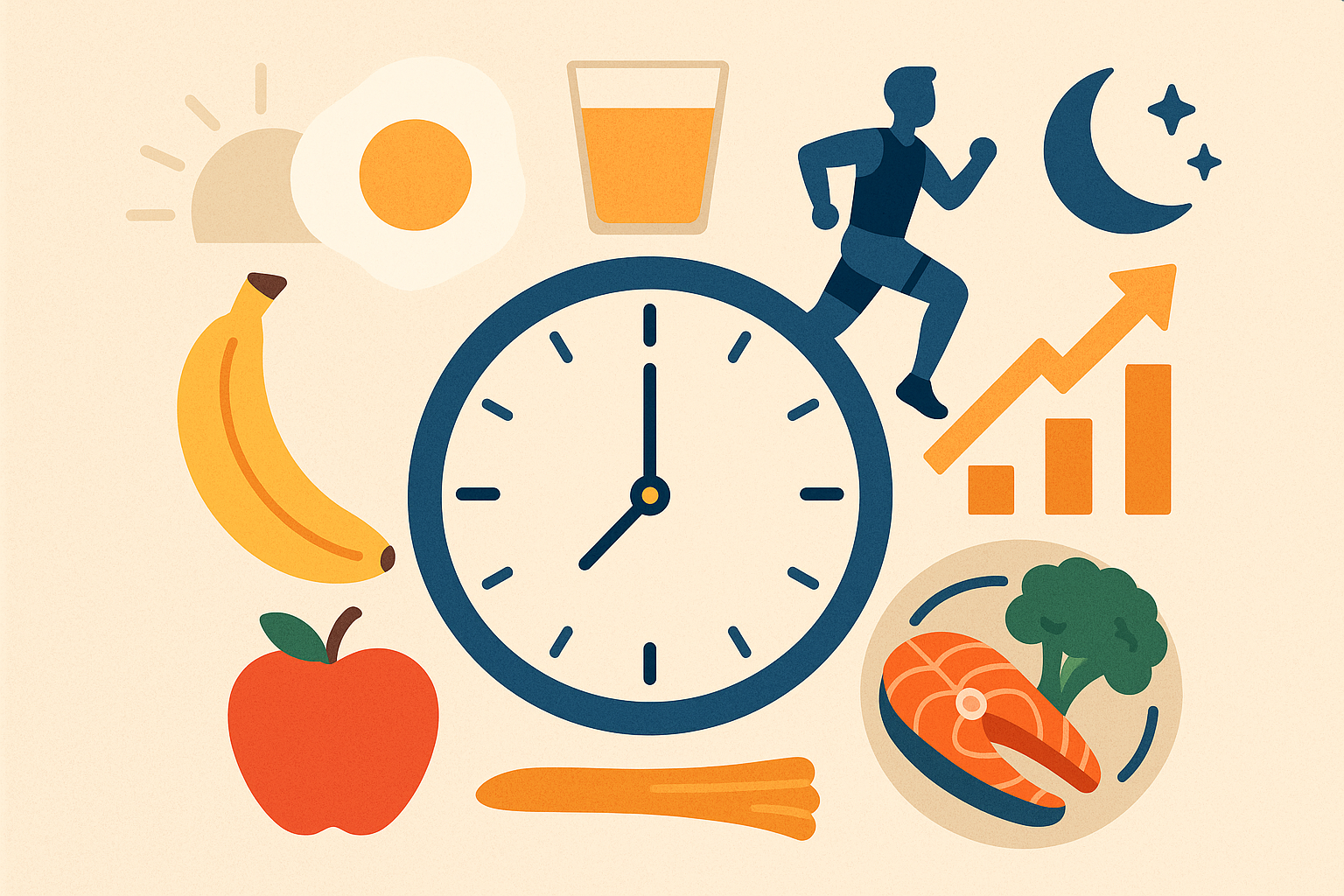
Pre-Workout Fuel That Makes Sense
Thirty minutes before you lift weights or do cardio, eat 20-30 grams of carbs. Not because some fitness influencer said so, but because your muscles literally run on glucose, and you want them to have fuel in the tank.
Good options: a banana, some oatmeal, or even a few dates. Nothing fancy, nothing expensive – just fuel for the machine.
What You’re
| What You’re Doing | Pre-Workout Carbs | When to Eat | Post-Workout Protein | When to Eat |
|---|---|---|---|---|
| Strength Training | 25-30g | 30-45 min before | 30-40g | Within 2 hours |
| Cardio/HIIT | 15-20g | 15-30 min before | 20-25g | Within 1 hour |
| Yoga/Light Stuff | 10-15g | 15-20 min before | 15-20g | Within 2-3 hours |
| Morning Fasted Workout | Skip it | N/A | 35-45g | Right after |
The Post-Workout Protein Window (It’s Real, But Not Scary)
After your workout, your muscles are basically screaming “FEED ME!” They want protein to repair and rebuild, and they want it within about two hours.
This isn’t just about getting swole (though that’s cool too). More muscle means higher metabolism, which means your 1700 calories go further.
Your Evening Calories Set Up Tomorrow’s Success
Here’s something most people don’t realize: what you eat at dinner affects how you feel about food the next morning. Eat a heavy, greasy meal at 9 PM, and you’ll wake up feeling sluggish and craving sugar.
But eat a balanced dinner with some protein and vegetables a few hours before bed? You’ll wake up actually hungry for breakfast (remember that feeling?) and ready to tackle your day.
The Sleep-Food Connection You’re Probably Missing
Evening meals that combine foods with tryptophan (like turkey) and magnesium (like pumpkin seeds) help you sleep better. Better sleep means better hunger hormones the next day, which makes your 1700 calorie plan feel way easier to stick to.
Evening Meal Success Checklist:
- Include 20-25g protein from turkey, fish, or Greek yogurt
- Add magnesium-rich foods like pumpkin seeds or dark leafy greens
- Finish eating 2-3 hours before bedtime
- Skip caffeine after 2 PM
- Choose complex carbs over simple sugars
- Keep portions moderate so you’re not digesting all night
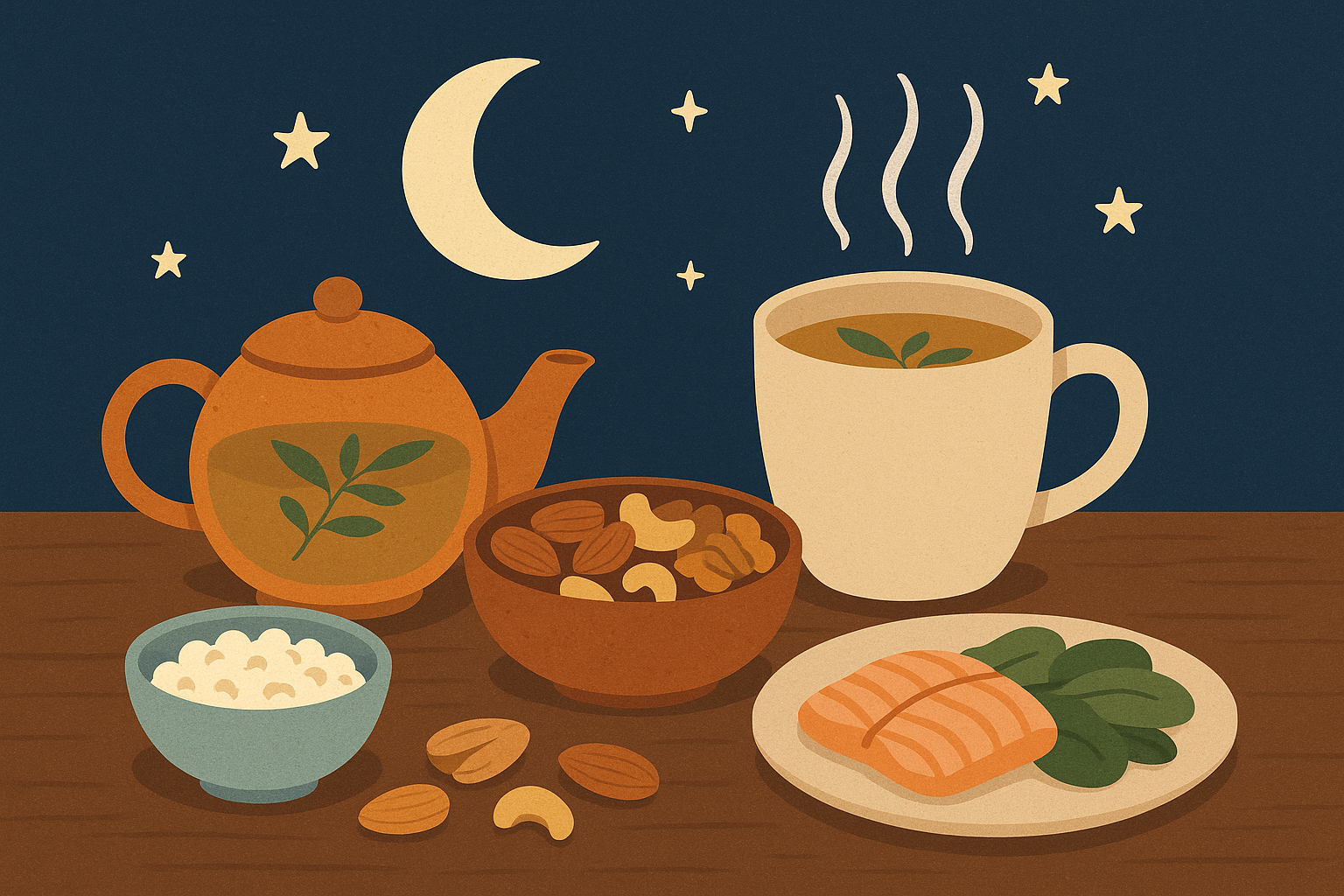
When to Eat What (And Why It Actually Matters)
Okay, let’s talk about something that sounds way more complicated than it is: using your body’s own feedback to figure out what’s working and what isn’t.
Your body is constantly giving you information – energy levels, sleep quality, cravings, mood. Most of us just ignore these signals or assume they’re random. They’re not.
Consider incorporating biohacking techniques to optimize how your body responds to your meal plan and maximize how efficiently you burn calories.
Using Your Body’s Data to Fine-Tune Your Plan
You don’t need fancy equipment to track how your body responds to your 1700-calorie plan. You just need to pay attention to patterns.
Feeling amazing for three days, then crashing on day four? Look at what you ate those first three days. Sleeping like garbage after certain meals? Time to investigate what’s in those meals.
Split your 1700 calories into three main meals and two snacks: 425 calories for breakfast, 510 for lunch, 510 for dinner, and 255 for snacks, with meals spaced 3-4 hours apart to maintain stable energy levels throughout the day, according to HeyWellness meal planning research.
Your body is way smarter than any app or calculator. It just needs you to listen.
What Your Blood Sugar Is Really Telling You
If you have a glucose monitor (and honestly, everyone should try one for a month), you can see in real-time how different foods affect your body.
That “healthy” smoothie that spikes your blood sugar to 180? Maybe not so healthy for you. The meal that keeps you steady at 110? That’s your body saying “thank you.”
If your blood glucose spikes above 140 mg/dL after a 510-calorie lunch containing quinoa and chicken, but stays below 120 mg/dL with the same calories from protein and vegetables, you know your body responds better to lower-carb midday meals within your 1700 calorie framework.
Your Heart Rate Variability as Your Recovery Compass
This sounds fancy, but it’s basically your body’s way of telling you how stressed or recovered you are. When your HRV is low, your body is saying “I need more fuel today” – that’s when you might bump up to 1800-1900 calories instead of forcing yourself to stick to 1700.
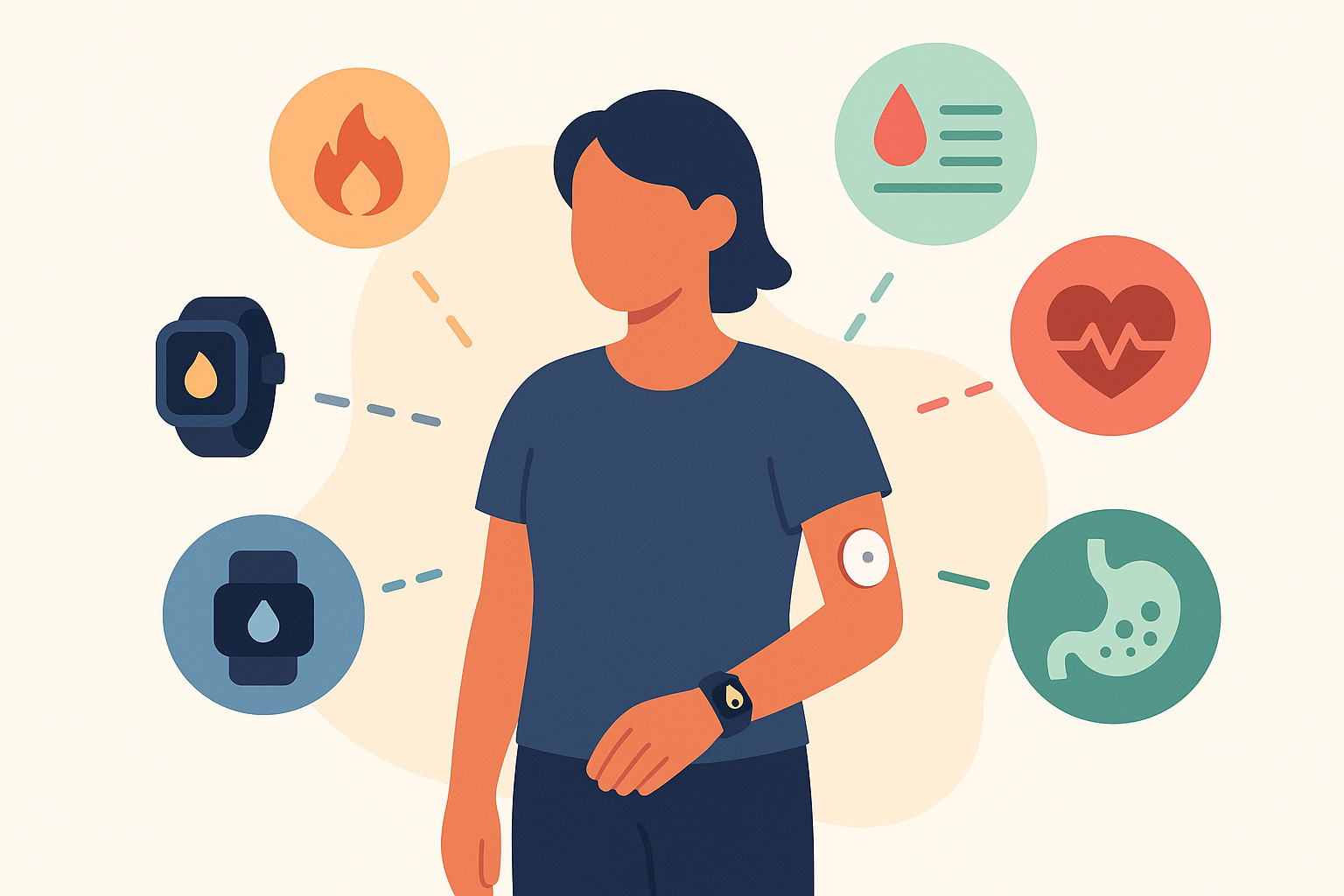
Signs Your Body Gives You (Beyond the Scale)
The most overlooked part of 1700 calorie meal plan success isn’t the food – it’s everything else. Your relationships, your family dynamics, your work schedule, your stress levels. All of this affects how well your plan works in real life.
Understanding digestive health principles can help you identify which foods work best within your caloric framework while minimizing discomfort and maximizing how well you absorb nutrients.
Making Your Plan Work with Your Family’s Reality
When your household operates on different eating patterns, your 1700 calorie plan can become a source of friction rather than flow. Instead of feeling supported, you end up feeling guilty about making separate meals or constantly negotiating about dinner choices.
I’ve worked with countless clients who gave up on their nutrition goals because of family drama, not because the plan didn’t work.
Component-Based Meal Prep That Actually Works
Instead of making complete meals, prep components that everyone can mix and match. Cook a big batch of chicken, some rice, some roasted vegetables. Then everyone can build their own plate based on what they want and need.
You get your balanced 1700-calorie portions, the kids get their preferred foods, and nobody has to eat sad desk salads while everyone else enjoys real food.
Component Prep That Saves Your Sanity:
- Proteins: Grill 2-3 lbs chicken breast, bake salmon fillets, hard-boil eggs
- Carbs: Cook quinoa, brown rice, sweet potatoes in bulk
- Vegetables: Roast mixed vegetables, prep raw salad components
- Healthy Fats: Portion nuts, prepare avocado, measure olive oil
- Assembly: Mix and match to hit your 425/510/510/255 calorie targets
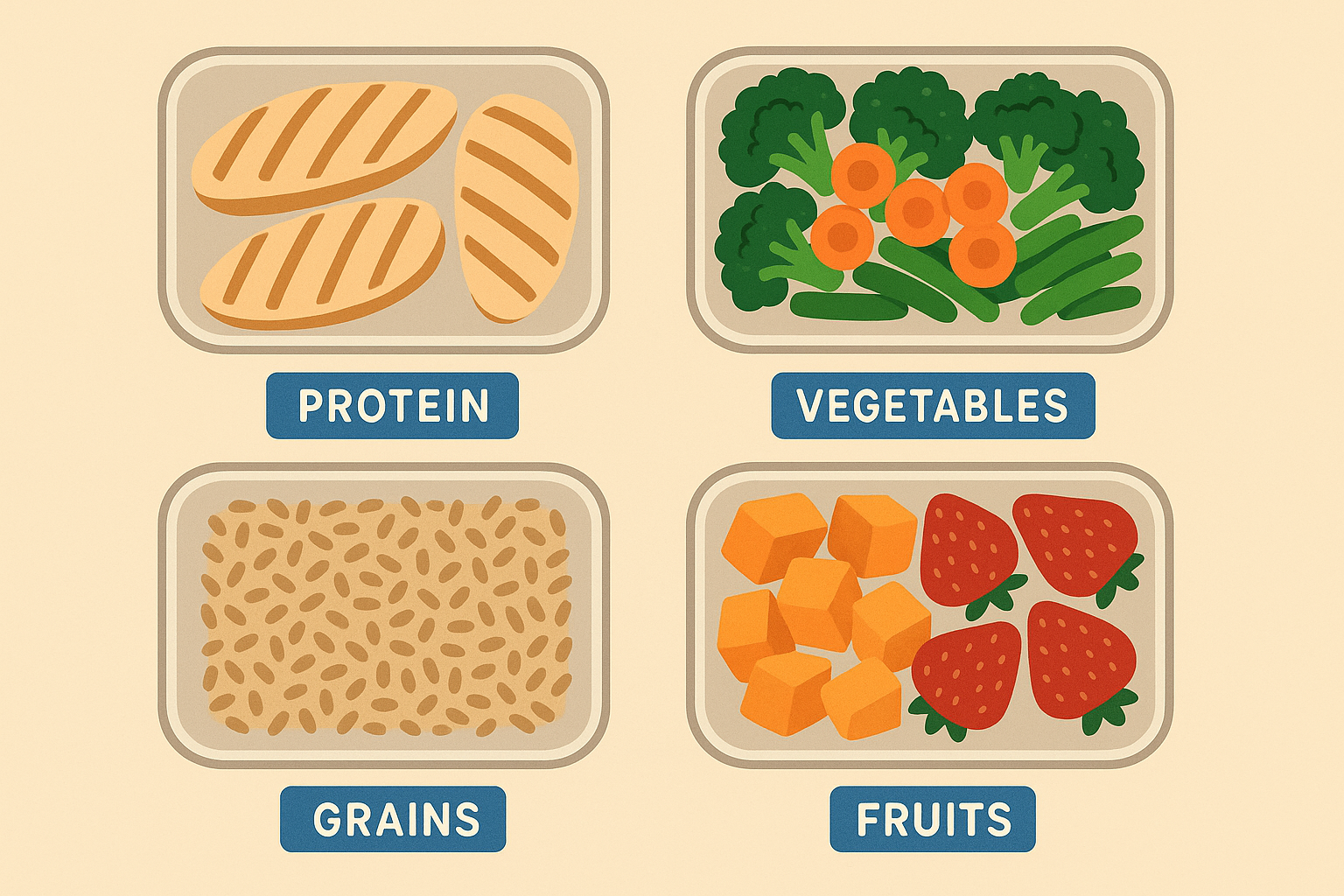
Getting Support Without Creating Drama
Research shows couples who support each other’s health goals have 67% higher success rates, but only when the support doesn’t feel like pressure or judgment.
This means having honest conversations about what kind of help you actually want. Maybe you want your partner to stop bringing home your trigger foods, but you don’t want them commenting on what you’re eating. Be specific.
Navigating Social Eating Without Becoming a Hermit
Restaurant meals and social eating situations can completely derail 1700 calorie plans, but you don’t have to become that person who brings their own food everywhere or makes everyone else feel awkward.
Strategic preparation lets you maintain your targets while fully participating in social experiences.
The 24-Hour Restaurant Strategy
Look up the menu before you go. I know, I know – it’s not spontaneous. But you know what’s also not spontaneous? Spending the next three days feeling guilty about what you ate.
Pick out a couple options that work with your goals. Then when you get there, you’re not making decisions while hangry and surrounded by bread baskets.
Creating Calorie Buffers for Social Situations
On restaurant days, eat 200-300 fewer calories earlier in the day. This creates flexibility for hidden oils, larger portions, and social drinks while keeping your weekly 1700 calorie average on track.
Social Eating Strategy That Actually Works:
- Review restaurant menu 24 hours ahead
- Bank 200-300 calories earlier in the day
- Choose protein-based appetizers or salads as main courses
- Ask for dressings and sauces on the side
- Drink water between alcoholic beverages
- Focus on conversation rather than food as entertainment
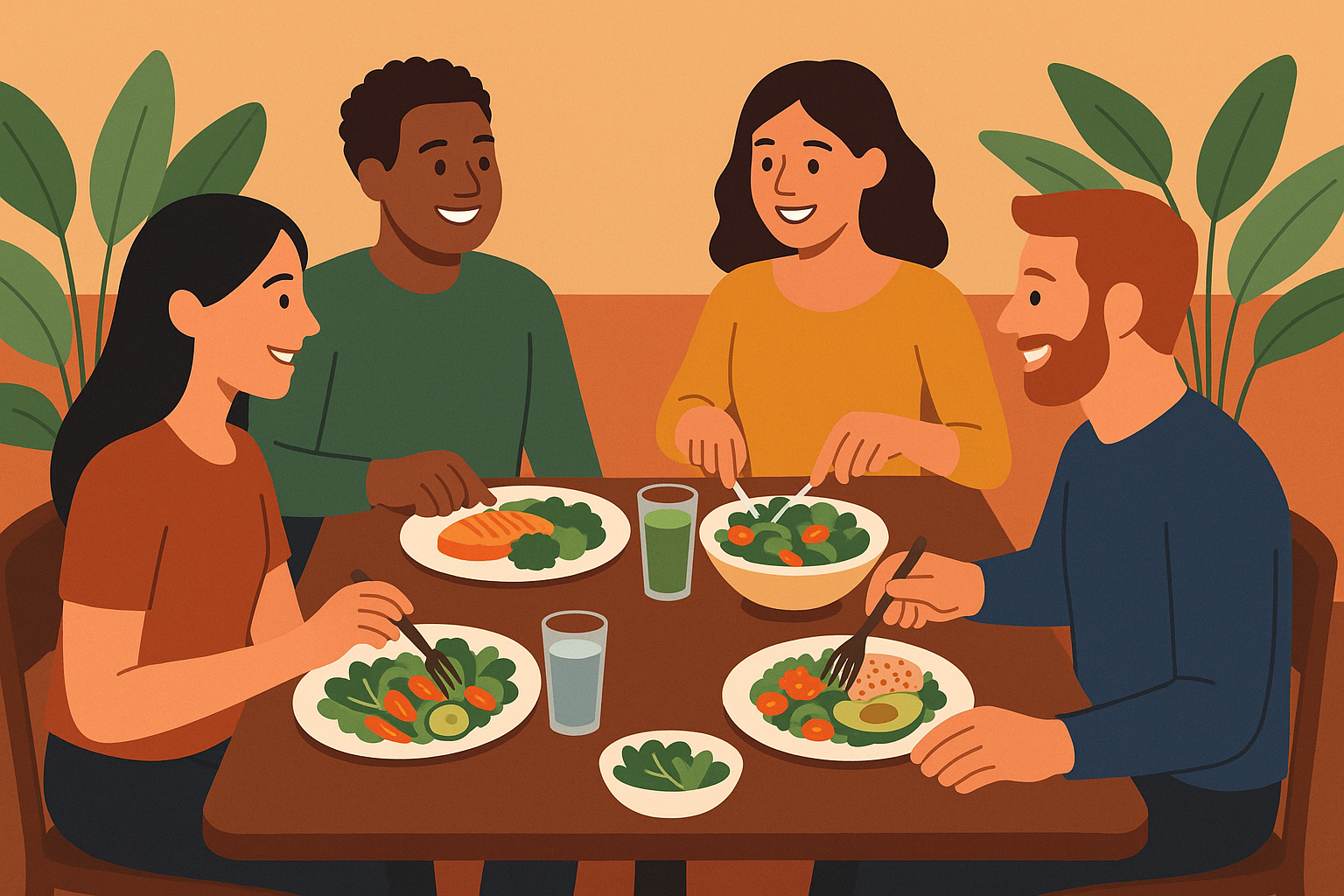
Making Your Plan Work with Real Life
When meal planning gets disrupted by life (because it always does), having backup strategies keeps you from throwing in the towel completely.
Consider how marine collagen peptides provide superior bioavailability compared to conventional options, making it easier to maintain your protein targets even when your meal prep doesn’t go according to plan. Adding a scoop to your morning routine ensures you’re hitting those crucial 25-30g of protein within 30 minutes of waking, regardless of what chaos is happening in your day.
For busy professionals juggling meal planning with work demands, exploring expert breakfast strategies can provide the foundation for maintaining your 1700 calorie targets throughout even the most hectic days.
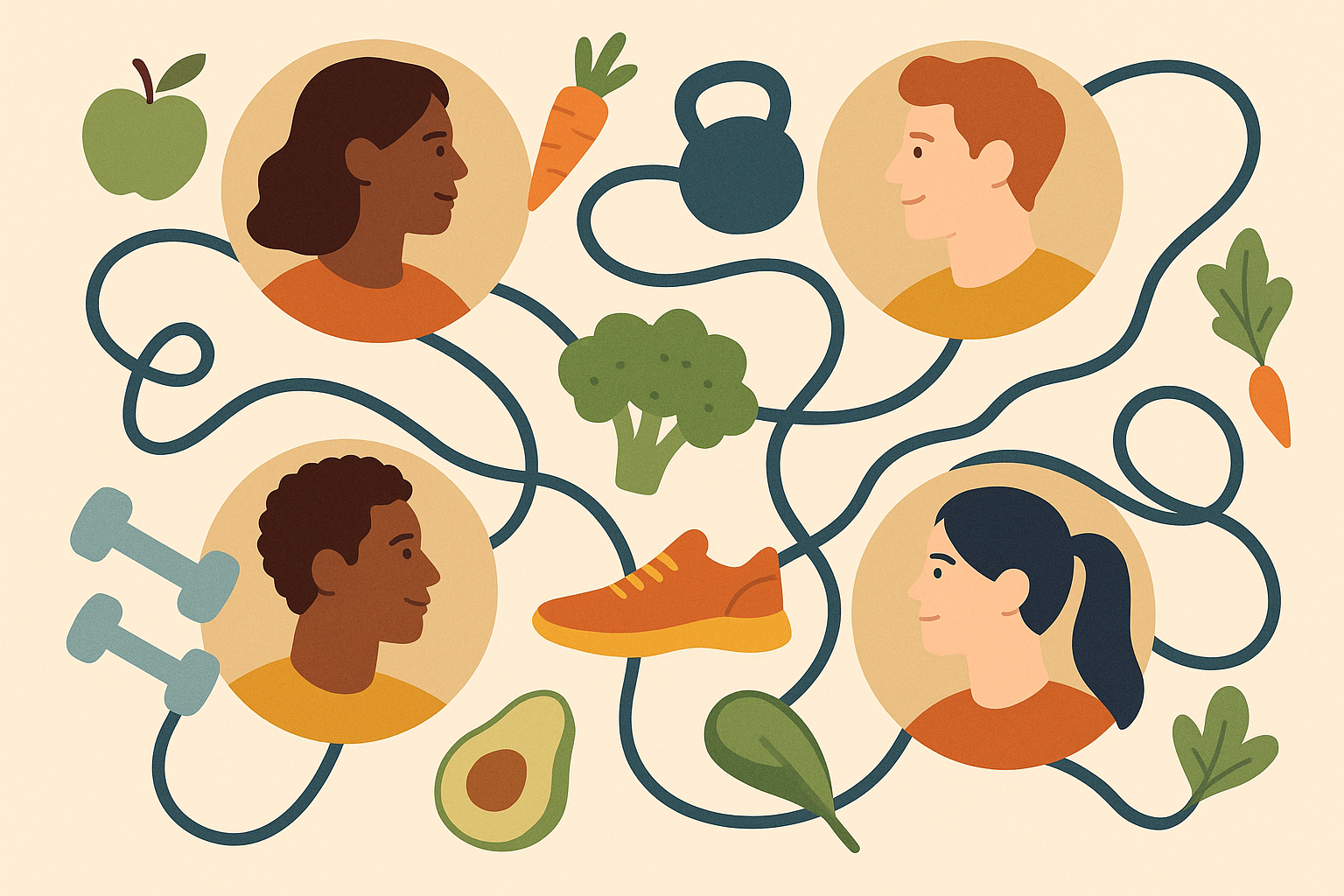
Final Thoughts
Your 1700 calorie meal plan doesn’t have to feel like a constant battle against your biology. The strategies I’ve shared here aren’t about perfection – they’re about being human while still taking care of yourself.
The biggest shift happens when you stop viewing calories as the enemy and start seeing them as fuel that needs to be timed and distributed strategically. Your hormones matter. Your sleep matters. Your stress levels matter. Your family situation matters.
Give yourself at least a month to try these adjustments. Your body needs time to trust that you’re not going to starve it or restrict it into oblivion. Be patient with the process and pay attention to how you feel, not just what the scale says.
Remember that getting your metabolism flexible takes time to develop. Give yourself at least 4-6 weeks to see how these changes affect your energy levels, cravings, and overall ability to stick with your plan. Your body is incredibly adaptable, but it needs consistent signals to understand what you’re asking of it.
Most importantly, pay attention to how you feel rather than just what the scale says. Better sleep, stable energy throughout the day, and reduced food obsession are often more valuable indicators of success than daily weight fluctuations.
The best meal plan is the one you can actually stick to. Not for a week or a month, but for the long haul. Because that’s where the real magic happens – not in perfect adherence to some arbitrary rules, but in finding a way of eating that supports your life instead of controlling it.

